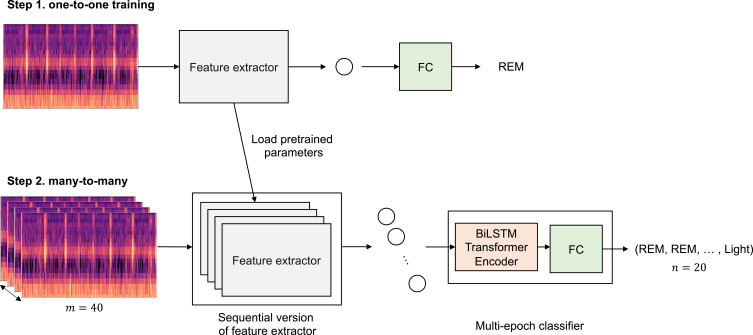Figure 4.
The two-step training flow of SoundSleepNet. Along with the simplified first step (one-to-one), the second step (many-to-many training) was shown with m being the number of input epochs and n being the number of output predictions. The two core elements in the second step were sequential version of feature extractor and multi-epoch classifier. The parameters pretrained in the first step were transferred for feature extractor, which were duplicated for many-to-many network. Multi-epoch classifier includes Bi-directional Long Short-Term Memory (Bi-LSTM) Transformer Encoder and fully connected layers (FC). While the first Transformer Encoder within the feature extractor (not shown in figure) aims to extract intra-epoch features, the second Transformer Encoder, BiLSTM Transformer Encoder within the multi-epoch classifier, extracts inter-epoch features. The head and tail of the transformer encoder’s output were removed before the last fully connected layer. Thus, only 20 predictions at the middle of the sequence were finally outputted, ensuring all predictions were made with consideration of both past and future epochs.

